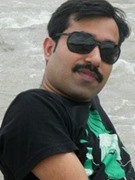What are macromolecules?
Cells of the body have four main macromolecules that help keep the cell alive and functioning properly.
The four macromolecules are carbohydrates,lipids,proteins, and nucleic acids.
A macromolecule is a large molecule formed when elements and molecules combine together.
Elements like carbon,hydrogen, and oxygen join together to make up macromolecules.
Each macromolecule is unique and made up of different smaller molecules.
Look at the macromolecule DNA compared to a water molecule.
Carbohydrates are composed of three elements, carbon,hydrogen, and oxygen.
Carbohydrates store energy and provide structural support.
Sugars and starches are carbohydrates.
The cell wall of plants is composed of the carbohydrate cellulose
Lipids are macromolecules composed of carbon, hydrogen, and oxygen. Some of them also contain nitrogen and phosphorus.
Examples of lipids are fats, steroids, waxes and phospholipids.
Lipids help make cell membranes and energy storage.
Proteins are large chains of amino acids. There are 20 amino acids used y your body. Your RNA carries instructions to the ribosomes on the order of the amino acid for each protein it makes.
Proteins carry out many jobs in the cell.
Your body has hundreds of proteins. Some help with communication, other help with transportation, The protein amylase found in your saliva helps break down food.
Collagen is a protein that helps bind skin cells together.
Nucleic Acids are long chains of nucleotides.
DNA is made of adenine,cytosine,thymine,and guanine.
Nucleic acids are important because they contain genetic information that has instructions for cell growth, cell reproduction, and cell processes.
In summary
There are four main nucleotides found in a cell.
They are carbohydrates,lipids,proteins, and nucleic acids

































1 Response
Thank you for sharing the information
Share Your Thoughts